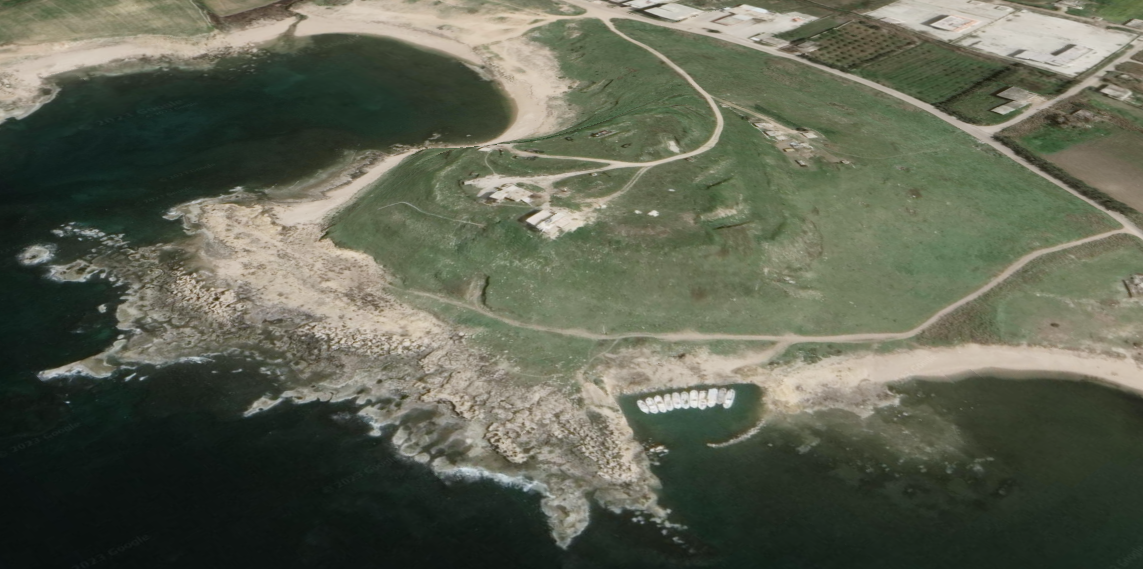Tell Sukas
| Transliterated Name | Source | Name |
|---|---|---|
| Tell Sukas | ||
| Shuksi | ||
| Suksi | ||
| Su-uk-su | ||
| Suksa |
Description, Identification, and Excavations
Tell Sukas is located on the coast of Syria, about 26 km (16 mi.) from Latakia and 6 km (4 mi.) south of Gabla (35°20' N, 35°55' E). It lies on a fertile plain bordered by coastal mountains on the north, east, and south. Tell Sukas has a northern and a southern harbor, indicating that the site was an important port in antiquity. The ancient name of Sukas is known: it is Su-uk-su (Suksa), a town at the southern frontier of Ugarit and is mentioned in Egyptian, Ugaritic, and Hittite documents. No inscription with the name was found on the tell. In 1934 Emil O. Forrer, on behalf of the Bryn Mawr College Expedition to Cilicia, made two soundings at Tell Sukas that demonstrated the site's long history. The Danish archaeologist P. J. Riis excavated at Tell Sukas under the auspices of the Carlsberg Foundation in five campaigns (1958-1963).
Aerial Views
Phasing
| Phase | Period | Date | Comments |
|---|---|---|---|
| A | late Middle Ages up to the present | ||
| B | Crusader | ||
| C | Byzantine | ||
| D | Roman | ||
| E | Hellenistic | suffered greatly from later intrusive building activities. The evidence suggests that this was not a period of decline. | |
| E1 | Late Hellenistic II | c. 117 to 68 BCE | destroyed by the earthquake of 68 BCE |
| E2 | Late Hellenistic I | c. 140 to 117 BCE | also destroyed by an earthquake, probably the one that occurred in 117 |
| F | Neo-Phoenician | c. 380 to 140 BCE | When the tell was reoccupied, the new town was characterized by a completely different plan and building types and techniques. The settlers, who were Phoenicians rather than Greeks, did not follow the Hippodamian plan. Stone objects (statues of house gods) were recovered from many houses. Pottery, coins, and tombs belonging to the period were also excavated. |
| G | mostly Persian | ||
| G1 | mostly Persian | c. 552 to 498 BCE | For almost one hundred years after its destruction at the end of the period G1, Tell Sukas was nearly desolate |
| G2 | mostly Persian | c. 588 to 552 BCE | |
| G3 | mostly Persian | c. 675 to 588 BCE | Following the site's destruction in 677 or 671 BC E by the Assyrians under King Esarhaddon, Greeks settled there, forming the majority of the population. The newcomers erected new buildings and in some cases rebuilt ruins. Private houses, temples (phase G2), and pottery (east Greek and Cypriot) were unearthed. The settlers were primarily peasants, but also fisherman. |
| H | Iron Age | c. 1170 to 675 BCE | The architectural remains of this period are poor and it was difficult to determine the house types. |
| HII | Phoenician II | c. 850 to 675 BCE | |
| HI | Phoenician I | c. 1170 to 850 BCE | Sukas was partially destroyed in the Assyrian invasion of the Syrian coast in about 850 BCE. This destruction marked the transition between periods HI and HII. |
| J | Late Bronze | c. 1600 to 1170 BCE | Later building activity, especially the construction of a new town in period F, seriously disturbed many phases of the Bronze Age layers. Evidently, Sukas was partially destroyed by fire at the end of the Late Bronze Age. However, the devastation there was not as widespread as at Ugarit. |
| K | Middle Bronze | c. 2000 to 1600 BCE | Later building activity, especially the construction of a new town in period F, seriously disturbed many phases of the Bronze Age layers |
| L | Early Bronze | ||
| M | Chalcolithic | ||
| N | Neolithic | c. 6550 to 4800 BCE | Period N, the Neolithic (c. 6550-4800 BCE) , is separated from tire Chalcolithic level by a hiatus and is divided into three phases: Early, Middle, and Late local Neolithic. From the beginning of the Early local Neolithic to the end of the Late Neolithic, there seems to have been a continuous and gradual development. The Neolithic finds are comparable with those from Ras Shamra VA-BIV; Byblos Early Neolithic (Lower, Middle and Upper); and Tell Ard Tbaili (Lower and Upper). Some pottery sherds are comparable with sherds from 'Amuq phase B (dark-faced burnished ware). [See Ugarit; 'Amuq.] |
68 BCE Earthquake
Ali Abou Assaf in Meyers et al (1997)
reports that
Riis et al (1970-1986) attribute destruction at the end of Period E1 (Late Hellenistic II) to an earthquake in 68 CE.
Ambraseys (2009) notes, however, that the
date of 68 BC, which [was] assigned to the event, was taken from historical information rather than from archaeological evidence
.
Wikipedia page for Tell Sukas
